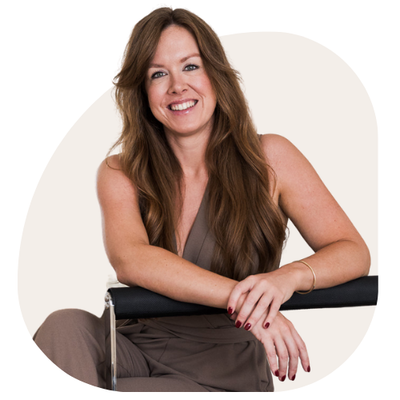Wall Pilates is quickly gaining popularity among both beginners and experienced Pilates enthusiasts. It seems simple: you use a wall to add stability and control to your exercises. But this method is surprisingly effective. Want to get more out of your wall workouts? Then you can equip your workout space with a Pilates Wall Unit , which transforms a simple wall into a complete Pilates setup.
In this blog we explain what Wall Pilates entails, how it differs from other forms such as mat Pilates or Reformer Pilates, and who it is suitable for.
What is Wall Pilates?
In Wall Pilates, you use the wall as a reference and support point during classical Pilates exercises. This helps you align your body correctly, improve your posture, and control your movements. You maintain contact with the wall during exercises like wall squats, bridges, roll-downs, and plank variations.
Although Wall Pilates is often practiced at home with just a mat, it's also used professionally. Especially when combined with a Wall Unit, this training method becomes a fully-fledged Pilates solution in studios and rehabilitation practices.

The Benefits of Wall Pilates
- Correct posture – The wall helps keep your body straight and stable during every movement.
- Better core activation – Because you have to constantly check your posture, you automatically train your deeper abdominal muscles.
- Accessible to everyone – Whether you are a beginner or recovering from an injury, the wall offers support and safety.
- A compact workout option – You don't need a large piece of equipment. A free wall and a mat are all you need to get started.
What is the difference with Mat Pilates?
Mat Pilates involves performing exercises on the floor without support. This requires more body control and is less forgiving for beginners. Wall Pilates offers direct feedback and support, making it easier to learn to move with correct technique. It also reduces the risk of strain or incorrect posture.
What is the difference with Reformer Pilates?
A Reformer is a device with a sliding platform and adjustable springs that allows you to add resistance to your workout. The movements are more dynamic and fluid than Wall Pilates, which focuses more on posture, control, and stability using a fixed support point.

How do you use a Wall Unit in Wall Pilates?
With a Wall Unit, you add springs, handles, and bars to your wall. This dramatically expands your workout options. You can perform exercises normally only possible on equipment like a Tower or Cadillac, but without sacrificing floor space.
A Wall Unit is ideal for studios with limited space, for trainers who give personal sessions, and for home users who want to train professionally without the need for a large piece of equipment.
Conclusion
Wall Pilates is an accessible and powerful workout that focuses on posture, core control, and precision. It's easy to start and easily expand with professional equipment like a Wall Unit . Whether you train at home or work in a studio, this method lets you get the most out of your wall. Want to know which system is best for your space? Contact us or use our selection guide .
Frequently Asked Questions (FAQ)
1. Do I need a Wall Unit for Wall Pilates?
Not for beginners. You can start with just a wall and a mat. For more variety and challenge, a Wall Unit is ideal.
2. Is Wall Pilates suitable for rehabilitation?
Yes, it was developed with a focus on posture and control, which is why it is often used in recovery programs.
3. Can I combine Wall Pilates with other forms?
Absolutely. It's a perfect complement to Mat Pilates or Reformer workouts.
4. Do I need a lot of space for Wall Pilates?
No, a free wall of about 2 meters wide is sufficient for varied training.
5. Where can I find a suitable Wall Unit?
You can find our collection on the Wall Units page. Feel free to contact us with any questions.





